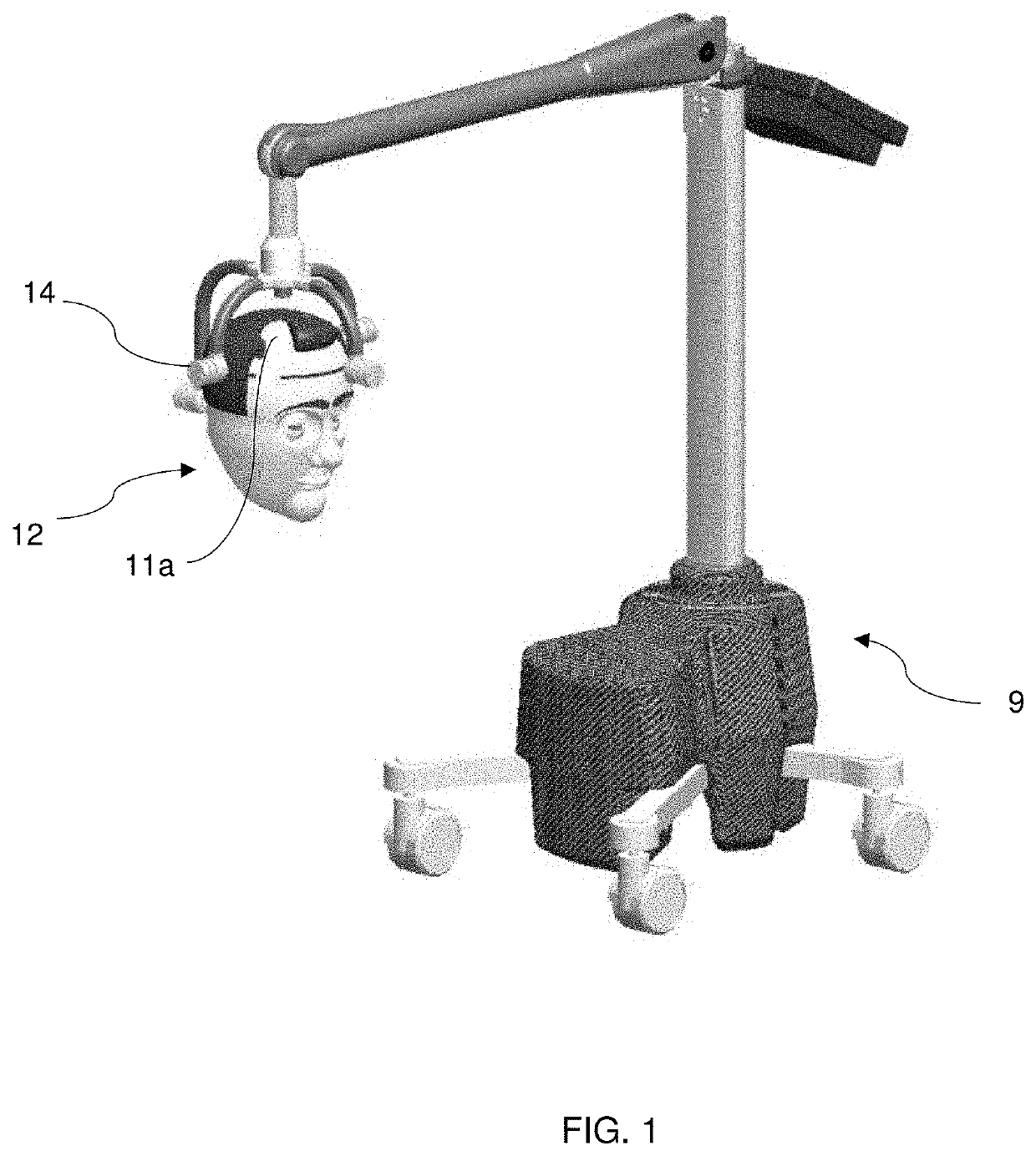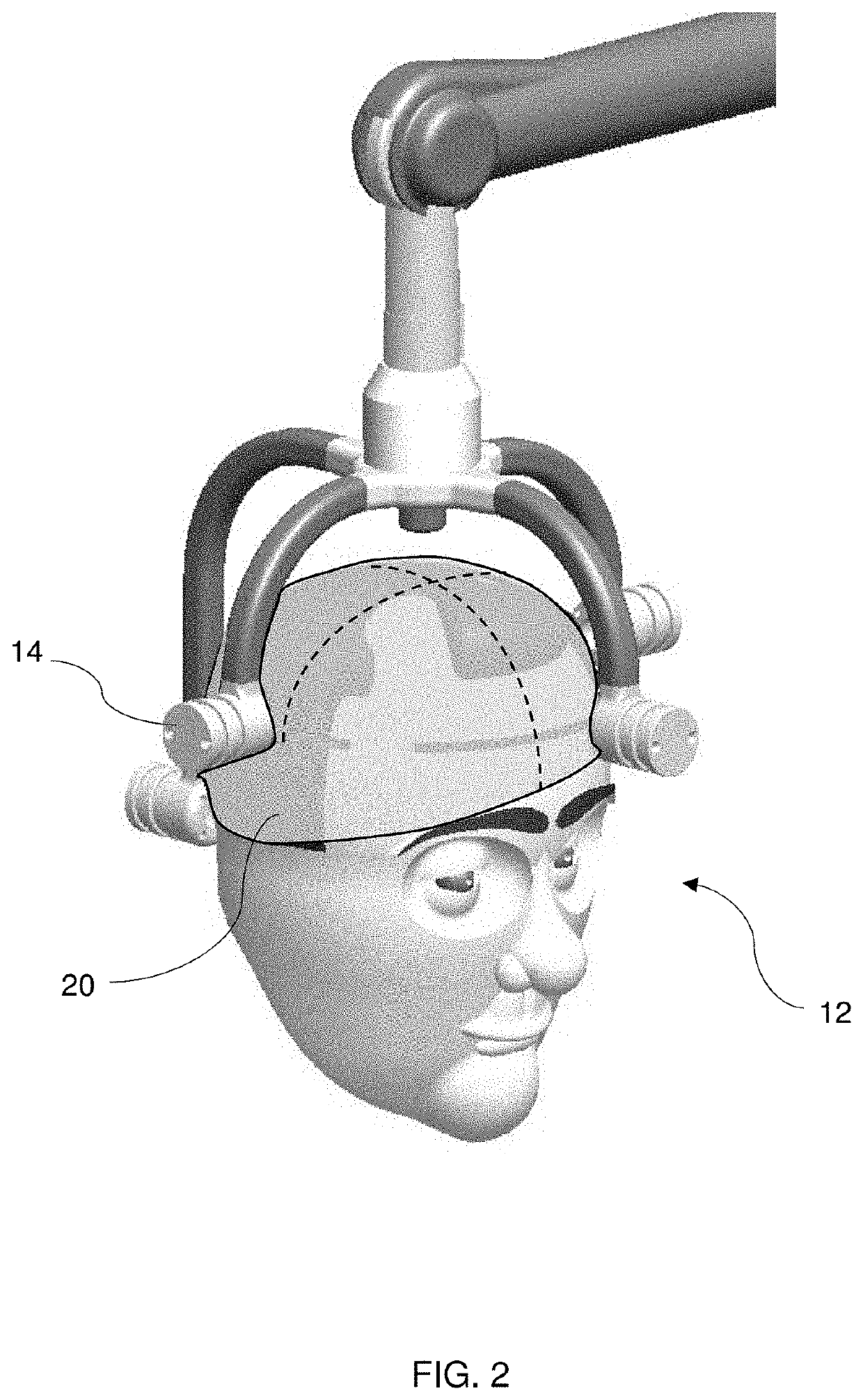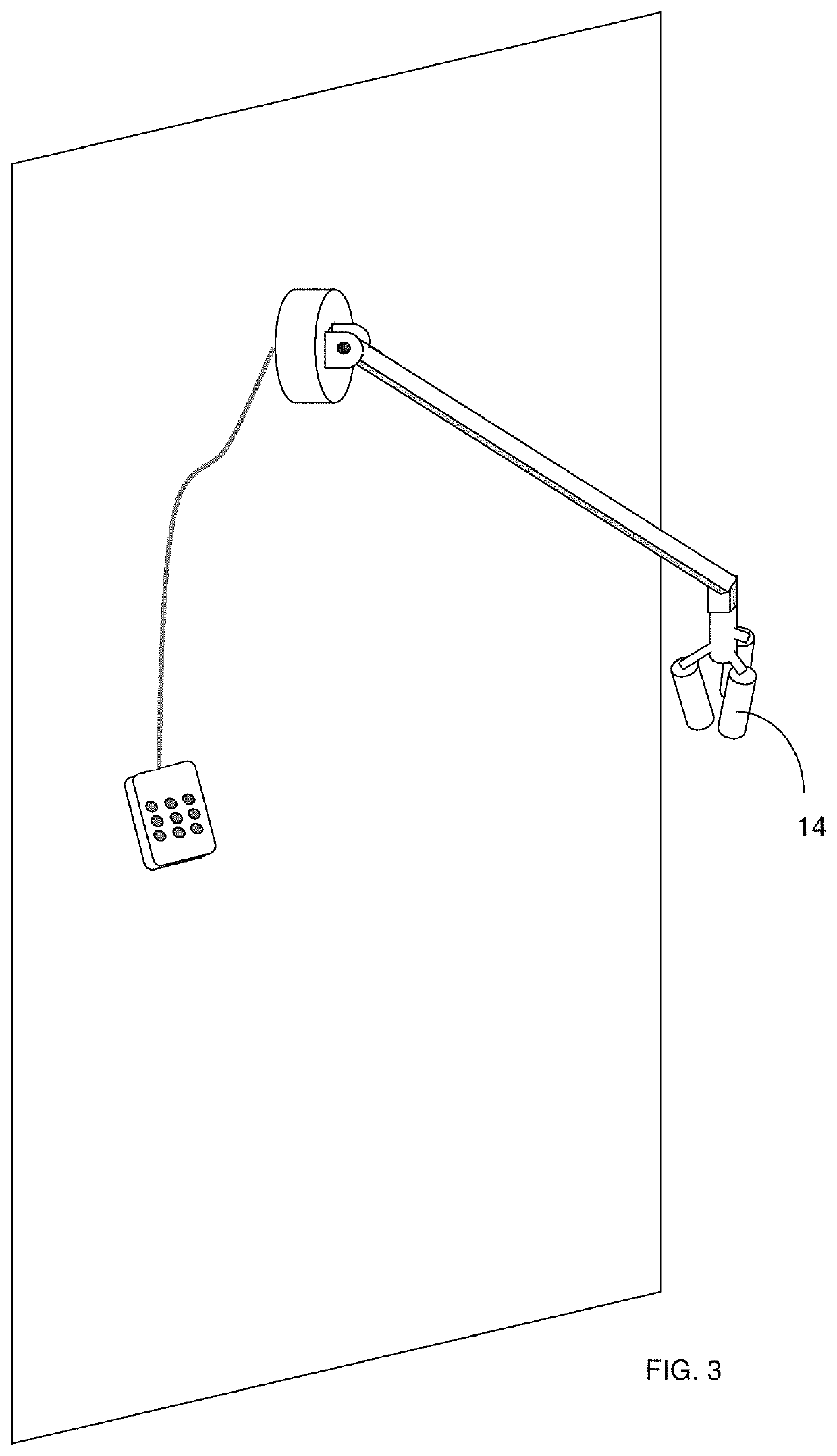Methods of treating autism using light therapy
a technology of light therapy and autism, applied in the field of brain disease treatment, can solve the problems of increasing the burden on caregivers, increasing the cost of care and care, and gradually worsening symptoms, so as to achieve enhanced treatment
- Summary
- Abstract
- Description
- Claims
- Application Information
AI Technical Summary
Benefits of technology
Problems solved by technology
Method used
Image
Examples
example # 1
Autism Example #1
[0035]Children exhibiting autistic behaviors are treated with low-level laser by scanning each patient's frontal cortex, temporal area and the base of the brain for 10 minutes, twice weekly, 3-4 days apart, for three consecutive weeks, for a total of 6 treatments. The patient's frontal cortex, temporal area and the base of the brain are lazed equally in a continuous sweeping motion continuously during the 10-minute treatment session using pulse frequencies of 8 Hz, 53 Hz, 73 Hz and 101 Hz. The light-emitting device used comprised a hand-held laser device with two 7 mW red semiconductor laser diodes emitting a line of red laser light at a wavelength of 635 nm±5 nm. Changes in behavior are measured using the Aberrant Behavior Checklist (“ABC”). Significant improvements are achieved in all 5 ABC Subscales and the ABC global score. No adverse events occurred.
example # 2
Autism Example #2
[0036]Children exhibiting autistic behaviors are treated with low-level laser by scanning each patient's temporal areas and the base of the brain for 5 minutes, twice weekly, 3-4 days apart, for four consecutive weeks, for a total of 8 treatments. The patient's temporal regions and the base of the brain are lazed equally in a continuous sweeping motion continuously during the 5-minute treatment session using pulse frequencies of 8 Hz, 53 Hz, 73 Hz and 101 Hz. The light-emitting device used comprises a hand-held laser device with two 7 mW red semiconductor laser diodes emitting a line of red laser light at a wavelength of 635 nm±5 nm.
example # 3
Autism Example #3
[0037]A patient suffering from autism symptoms is treated with a 15 mW hand-held laser device, emitting a line of red laser light at a wavelength of 635 nm±5 nm from semiconductor laser diodes. The line of laser light is manually scanned on the front of the patient's head near the frontal lobes using one or more pulse frequencies of 8 Hz, 53 Hz, 73 Hz and 101 Hz. The patient is treated for 5 minutes in each treatment, having two treatments per week for four weeks.
PUM
 Login to View More
Login to View More Abstract
Description
Claims
Application Information
 Login to View More
Login to View More - R&D
- Intellectual Property
- Life Sciences
- Materials
- Tech Scout
- Unparalleled Data Quality
- Higher Quality Content
- 60% Fewer Hallucinations
Browse by: Latest US Patents, China's latest patents, Technical Efficacy Thesaurus, Application Domain, Technology Topic, Popular Technical Reports.
© 2025 PatSnap. All rights reserved.Legal|Privacy policy|Modern Slavery Act Transparency Statement|Sitemap|About US| Contact US: help@patsnap.com



